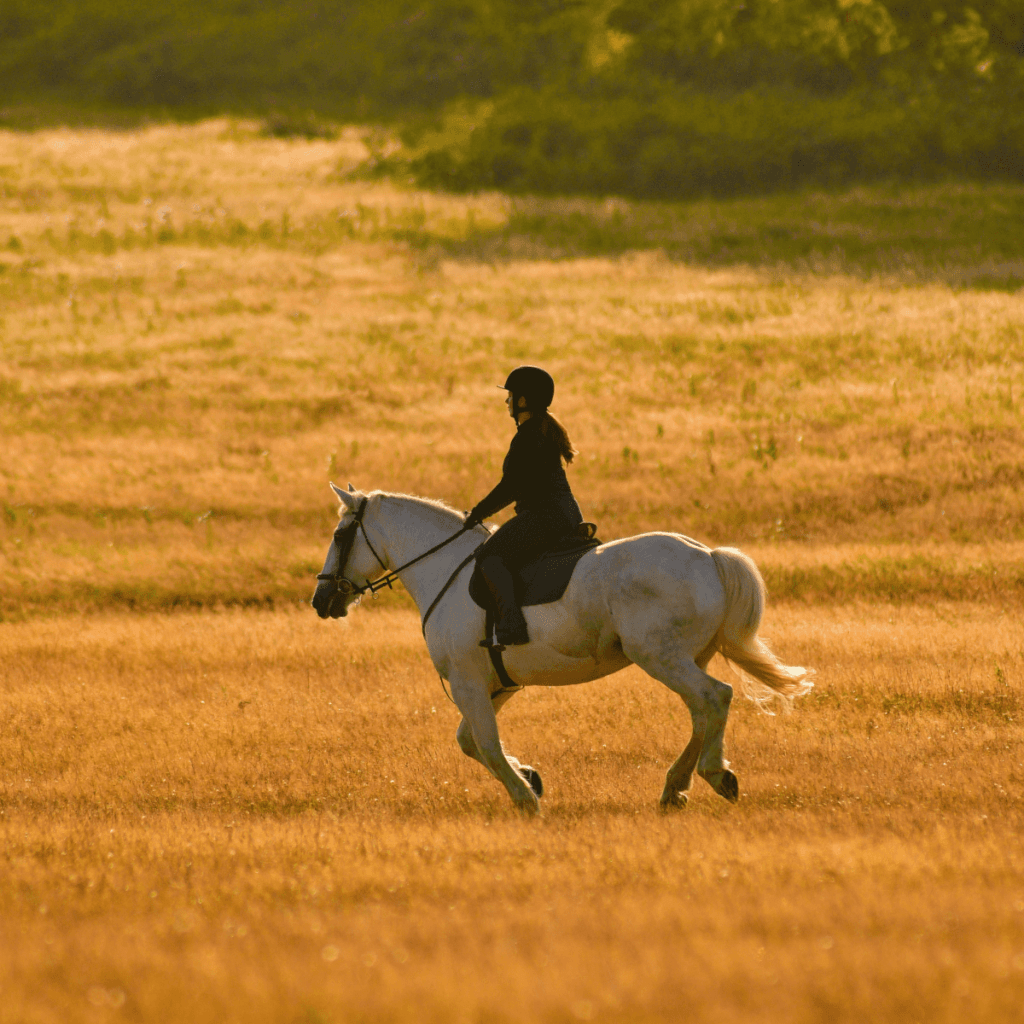Horseback riding is a rewarding and enjoyable skill to develop, but like any sport, it comes with its challenges.
Many beginners, and even experienced riders, can make common mistakes that hinder progress and impact their riding experience. Fortunately, these mistakes can be corrected with awareness, practice, and a little patience. Here are some of the most frequent errors riders make and how to overcome them.
1. Poor Posture
One of the most common mistakes in horseback riding is poor posture. Riders often slouch or lean forward, which can affect their balance and comfort. A proper riding posture involves sitting upright with your shoulders back, chest open, and eyes looking forward. Keep your back straight and avoid leaning too much in any direction.
How to Fix It: Imagine a straight line running from the top of your head to your heels. Try to maintain that alignment while you ride. Engaging your core muscles will help you stay balanced and improve your posture. If you’re struggling, ask your instructor to check your posture during a lesson or use a mirror to observe yourself.
2. Gripping the Horse with Your Legs
Many riders, especially beginners, tend to grip the horse with their legs in an overly tense or tight manner. This can make your horse uncomfortable, as well as affect your balance and riding efficiency. It also can make it difficult for you to give clear aids to the horse.
How to Fix It: Instead of gripping with your legs, focus on maintaining a light and steady contact. Think of your legs as gently wrapping around the horse, not pinching or squeezing. Keep your thighs relaxed while your calves rest gently against the horse’s sides. This will give you better control and communication with the horse, making your ride more comfortable for both you and your horse.
3. Holding the Reins Too Tight
Another common mistake is holding the reins too tightly. While it’s important to have contact with the horse’s mouth, excessive tension can cause discomfort and confusion for your horse. Holding the reins too tight also creates tension in your arms, which affects your ability to give soft, clear aids.
How to Fix It: Try to maintain a soft, relaxed grip on the reins, allowing for a consistent connection with your horse’s mouth. Your arms should move fluidly with the horse, and your hands should be steady but not rigid. Practice riding with a relaxed hand and focus on developing a feel for the horse’s movements.
4. Looking Down
Looking down at your horse’s neck or your feet is a common mistake among beginners. This habit can throw off your balance and cause you to miss important cues about the horse’s movement. It also limits your ability to anticipate what is coming next in the ride, such as jumps or changes in direction.
How to Fix It: Keep your gaze forward and look ahead in the direction you’re going. Focus on the horizon or a point in the distance. Not only will this improve your balance, but it will also make your ride safer, as you’ll be able to react more quickly to any changes or obstacles.
5. Overusing the Hands
Some riders rely too much on their hands to control the horse, which can create tension and confusion for the animal. Overusing the reins can cause the horse to become frustrated and lead to poor communication between you and your horse.
How to Fix It: Remember that your hands are just one part of your communication with the horse. The legs, seat, and body position are just as important in giving clear cues. Use your hands to give gentle, consistent signals, and pair those signals with your legs and seat for more effective communication.
6. Not Using Proper Seat Aids
Inexperienced riders often forget to use their seat effectively when riding. The seat is a crucial part of controlling the horse and giving cues, especially during turns, transitions, and more advanced movements. Without proper use of the seat, it can be harder to influence the horse’s movements and maintain balance.
How to Fix It: Focus on engaging your seat and pelvis to give subtle, but clear signals to the horse. When turning, rotate your hips in the direction of the turn, and for transitions, use your seat to guide the horse from one gait to the next. Pay attention to how your seat moves and make sure you’re always centered over the horse’s back.
7. Not Paying Attention to the Horse’s Feedback
Some riders get so focused on their own position or actions that they forget to pay attention to their horse’s behavior. Horses communicate through their body language, and ignoring their cues can lead to miscommunication and frustration.
How to Fix It: Always be aware of how your horse is responding to you. If the horse is tense, sluggish, or acting out, it may be a sign that you’re doing something incorrectly or that the horse is uncomfortable. Pay attention to the horse’s ears, body posture, and movement. If you’re unsure about what’s happening, take a moment to ask your instructor for feedback.
8. Inconsistent Riding Aids
Inconsistent or unclear aids (signals given by the reins, legs, and seat) can confuse the horse and make it difficult for them to understand what you want. Riders sometimes send mixed messages by using conflicting aids or by applying pressure too suddenly.
How to Fix It: Work on making your aids clear and consistent. If you want your horse to slow down, apply gentle pressure with your seat and reins, but don’t suddenly pull back. If you want the horse to turn, make sure your legs and seat position are aligned with your hands to create a smooth and clear signal.




